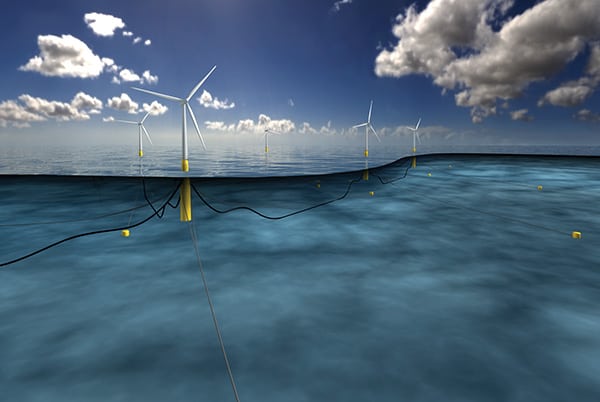Statoil to Build World's First Floating Offshore Wind Farm
Nearly five years after the world’s first large-scale floating deepwater wind turbine was erected 11 kilometers (km) offshore Karmøy, southeast Norway, Norwegian energy firm Statoil has made a final investment decision to build the world’s first floating wind farm.
The 30-MW Hywind pilot farm is to be installed on floating structures at Buchan Deep, 25 km offshore Peterhead in Aberdeenshire, Scotland. Owing to key technical innovations, Statoil will spend a relatively modest $235.8 million on the project—which it says is a stunning 60% to 70% cost reduction per megawatt compared to the single Hywind floating turbine demonstration project erected in 2009.
Construction is expected to begin in late 2017. The “pilot park,” as Statoil calls it, will occupy 4 km2 atop water depths of 95 meters (m) to 120 m. The location experiences wind speeds of 10.1 m/second and average wave heights of 1.8 m.
For Statoil, beyond advancing its own patented technology, the project opens up a promising new market. Offshore wind is already prevalent in Europe and China. But according to Statoil, fixed turbines are only feasible in water depths of 20 m to 50 m. Floating structures, however, could open up new areas around the world to offshore wind power generation. Potential future markets include eastern and western U.S. waters, and long-term potential prospects include waters offshore Brazil and Argentina, South Africa, Australia, New Zealand, western India, South Korea, and Japan.
—Sonal Patel, POWER associate editor.
